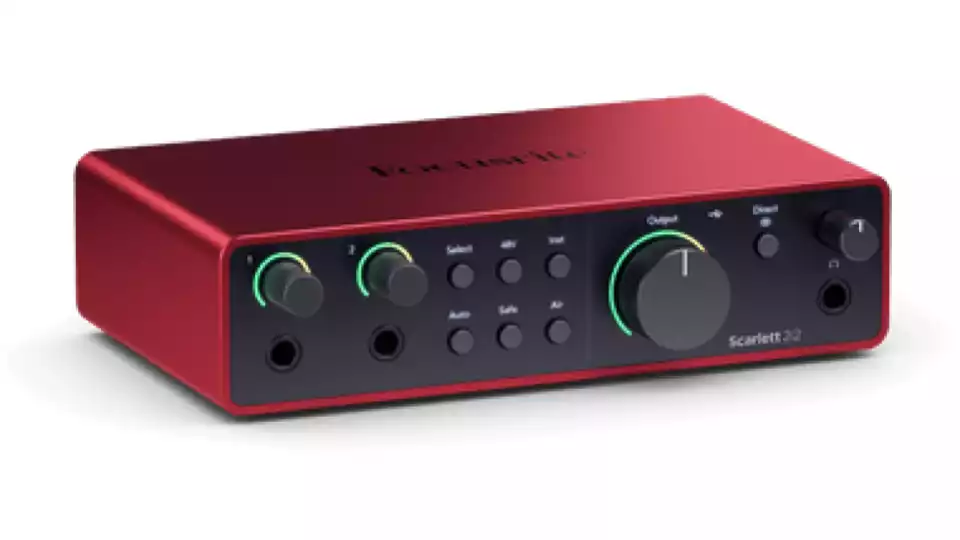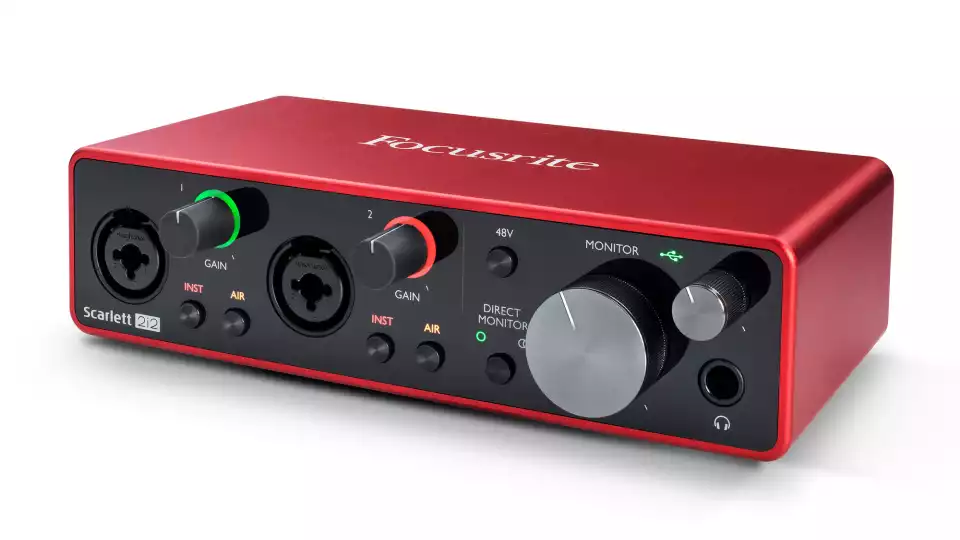Focusrite just recently released their 4th generation of Scarlett interfaces. So you may be wondering if it’s time for an upgrade.
We’re going to compare the two models and help you decide if the Scarlett 2i2 4th Gen is worth it, or if you should stick with the 3rd gen.
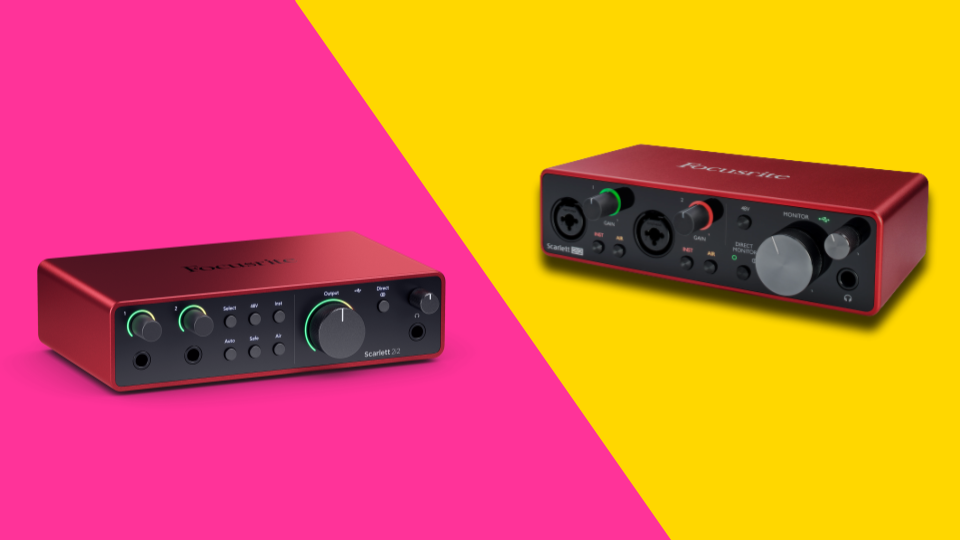
Quick Look: Focusrite Scarlett 2i2 4th Gen vs 3rd Gen
Overall, the jump from 3rd to 4th generation feels like the biggest leap forward compared to previous generations.
|
$199.99
|
$165.00
|
|
|
|
|
|
|
- 2 rear-facing XLR inputs
- 2 front-facing line inputs
- 2 line outputs
- Connects via USB-C
- 69db gain range for mic preamp
- 62db gain range for line input
- 120db dynamic range for line output
- 115db dynamic range for headphone output
- Direct Monitor offers latency-free monitoring
- 2 Air Mode settings — hi-range boost and mid-range boost
- Auto-Gain and Clip-Safe mode for automated level adjustment
- Optional external power
- Includes software bundle
- 2 XLR/line combo inputs
- 2 line outputs
- Connects via USB-C
- 56db gain range for mic preamp
- 56db gain range for line input
- 108db dynamic range for line output
- 108db dynamic range for headphone output
- Direct Monitor offers latency-free monitoring
- 1 Air Mode setting for hi-range boost
- Includes software bundle
Affiliate Disclaimer
Sonic Atlas is reader-supported. We may earn a commission if you purchase a product using one of our links, at no additional cost to you.
Ease of Use
Scarlett audio interfaces are known for their simplicity and ease of use. Thankfully, that’s remained consistent between generations.
You can access all the main controls from the front of either device — no additional software needed.
Inputs & Outputs
The I/O may be the one point of contention for some people.
Both the 4th and 3rd generation models are still 2-input, 2-output interfaces. Previous generations featured two XLR/line combo inputs on the front of each device.
The 4th generation 2i2 splits up the XLR and line inputs. The XLR ports are now on the back, while the line inputs are still on the front.
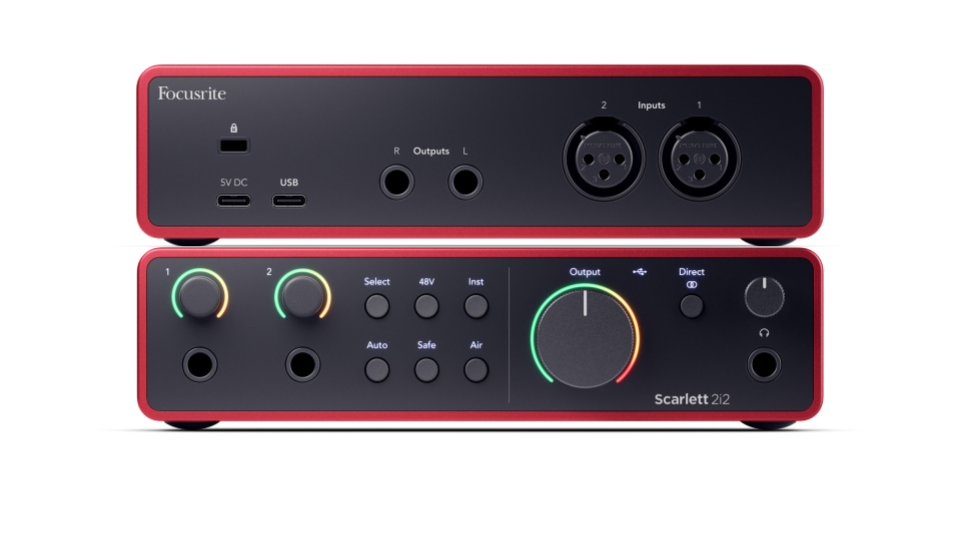
But even though they’re split up, it doesn’t actually double the number of available inputs. You can still only record two things at a time.
This design also makes the 2i2 4th gen slightly bulkier than the 3rd gen. Not by much, but it’s noticeable.
That said, many people keep their interfaces in a permanent place on their desk. So having the XLR cables run behind the device certainly helps with cable management. But I can also appreciate wanting the XLR ports on the front.
Build Quality
Again, the build quality is incredibly consistent between the two generations. The 4th generation maintains the iconic brushed-red aluminum chasis.
If you’re repulsed by fingerprints, then you’ll love the 2i2 4th gen! The front and back panels now feature a matte black finish, as opposed to the 3rd gen’s glossy black.
Aside from that, the buttons and dials are all rock solid on both devices. They feel nice to use, and aren’t very wobbly at all.
Audio Quality
Both interfaces can record 24-bit audio at up to 192 kHz. That said, the 4th Gen Scarlett has some major upgrades in regards to sound quality and circuitry.
For starters, the 4th gen now uses Focusrite’s RedNet converters, which are found in their high-end interfaces for pro studios and broadcast stations.
In simple terms, this advanced circuitry produces a cleaner signal from analog to digital. It’ll be less likely to introduce static hiss or any other unwanted noise.
Preamps & Gain Range
4th gen interfaces feature an extra nice 69db gain range for XLR input. This makes them more friendly with gain-hungry mics like the Shure SM7B.
On top of that, it also features a 62db gain range for line inputs.
Compare that to the 3rd generation’s 56db gain range for both XLR and line inputs. While respectable, it wasn’t enough to satisfy some naturally quiet devices.
Monitor & Headphone Outputs
A somewhat common criticism I’d see online is that older Scarletts can’t output audio to a terribly high level — particularly the headphones. And it seems that Focusrite took those criticisms to heart.
The 2i2 4th Gen’s main line outputs now offer up to 120db dynamic range, compared to the 3rd generation’s 108db.
Likewise, the headphone amps also saw improvements. 4th gen can now output up to 115db versus the 3rd gen’s 108db.
All that to say the 4th generation Scarletts can output audio at higher volumes.
Air Modes
The 3rd generation introduced the original Air Mode. This EQ option boosts the “presence” or hi-range of a signal to help it cut through a mix.
The 4th generation 2i2 now features two Air modes:
- Presence — This is the same mode introduced in the 3rd gen.
- Harmonic Drive — This new mode boosts a signal’s mid-range for more punch and body. It’s especially useful for instrumentalists, but vocalists can put it to good use too.
All in all, I’m a fan of having more options. And having two different EQ modes on the 4th Gen Scarlett gives it a serious edge over the 3rd Gen.
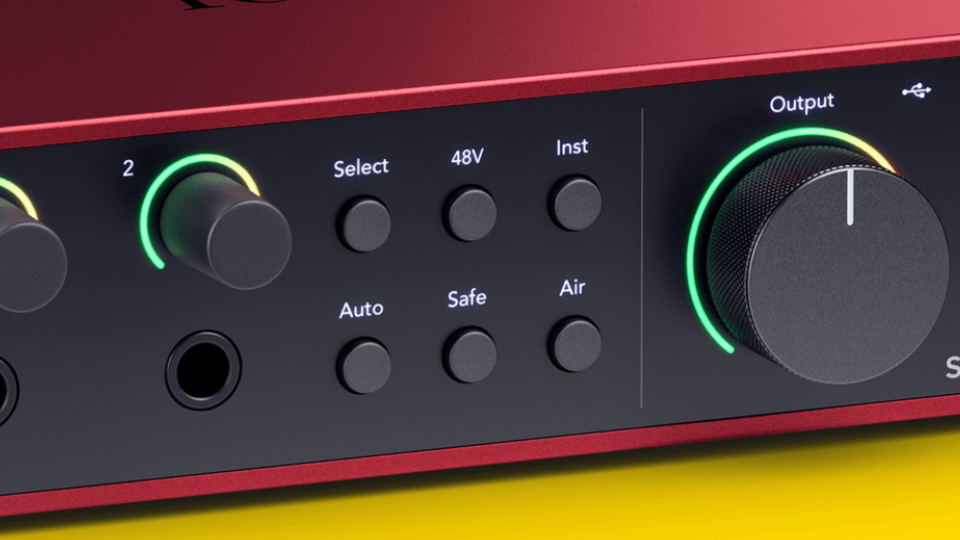
Auto-Gain & Clip-Safe Mode
These two features are only found on the 4th Generation Scarletts, and are completely absent in 3rd gen devices.
As the name suggests, Auto-Gain will read your signal and automatically set it to the perfect gain level. Just speak, sing, or play for 10 seconds, then the interface will adjust the gain for you.
But sometimes, you might get super excited when recording and you’re louder than expected. This is where the Clip-Safe Mode comes in.
With this mode activated, the interface will automatically reduce your gain levels to prevent clipping and distortion, saving you from doing multiple takes.
Connectivity & Power Supply
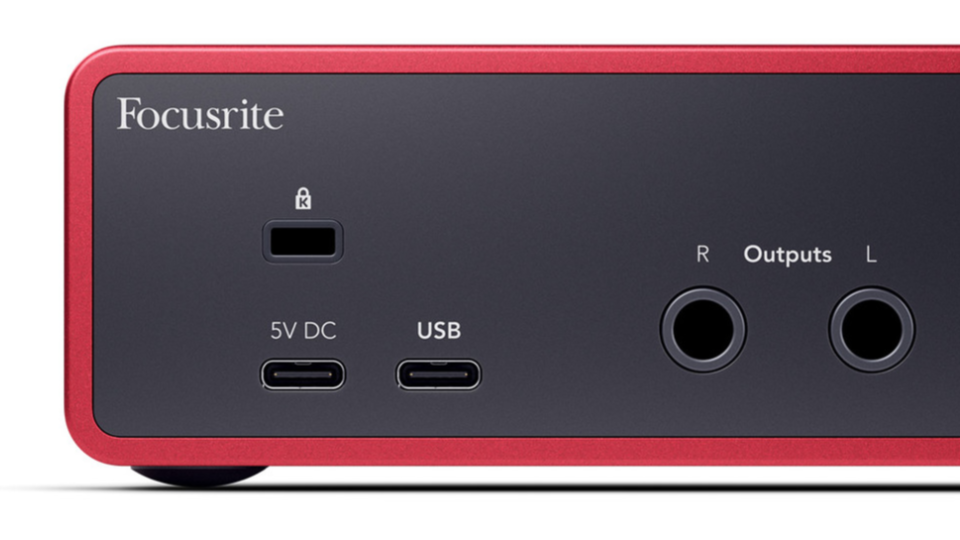
Both the 4th and 3rd Gen Scarletts use USB-C to connect to computers and mobile devices. It’s also what powers the device.
But the 4th Gen also features an optional USB-C port dedicated to power supply. This has a few notable benefits:
- It lets you use the 2i2 4th Gen with phones and mobile devices that otherwise don’t provide enough power.
- You can use an external power source and ease the burden on your computer.
Bundled Software
As of this writing, both generations come with the same expansive suite of software, including Focusrite’s Hitmaker Expansion bundle.
While I’d never recommend getting an interface just for the software, it’s a nice bonus — especially if you’re relatively new to music production.
Here’s what you get:
DAWs
- Ableton Live Lite
- Pro Tools Artist (3-month subscription)
Mixing, Mastering, and Effects Plugins
- Antares Auto-Tune Access
- Brainworx Bx_console Focusrite SC
- FAST Balancer
- Red 2 & 3 Plug-in Suite
- Relab LX480
- Softube Marshall Silver Jubilee 2555
- Sonnox Vox Doubler
Virtual Instruments
- Native Instruments Massive
- XLN Audio Addictive Keys
- XLN Audio Addictive Drums 2
Subscription Services
- Landr 2-month subscription, plus 5 free masters
- Splice 3-month subscription
Final Thoughts: Should You Upgrade to the Scarlett 2i2 4th Gen?
In my mind, yes. The 4th Gen Scarlett 2i2 isn’t just a minor update like previous generations. It has several significant benefits over its predecessor.
But a few features in particular make it a compelling upgrade:
- The improved preamps and gain range make some dynamic mics more viable without extra gear, like the Shure SM7B.
- Auto-Gain and Clip Safe Mode help automate input levels, taking out some of the guesswork for beginners.
- Having two different Air modes gives you more EQ options to experiment and record with.
If any of those features are important to you, then the 4th Gen Scarlett audio interfaces would be a fantastic upgrade.
But if you mostly record with neutral EQ settings, or you already have other gear to support your gain-hungry microphones, then there isn’t as much reason to upgrade.
A super-reliable audio interface that's perfect for any home studio. The 2i2 offers two inputs with built-in preamps for recording higher-quality audio. Plus, the new Auto-Gain features takes out the guesswork in setting input levels. It's the perfect, easy-to-use interface for any musician and podcaster.
- Improved gain makes some dynamic mics more usable
- 2 Air Mode settings — hi-range boost and mid-range boost
- Auto-gain and Clip Safe modes take out guesswork in setting input levels
- Rugged build quality
- Includes software bundle
- Split XLR and line inputs may confuse new users
Is the 3rd Gen Still a Good Deal for Beginners?
Compared to the 4th Gen model, the Scarlett 2i2 3rd Gen is boring, but beautiful.
It’s an incredibly simple device that’s affordable and user-friendly. There’s a reason why it’s consistently been one of the best audio interfaces for beginners.
As they’re being phased out, you’ll start seeing the 3rd gen model at discounted prices. If all you need is a simple audio interface without the extra bells and whistles, you’ll still find it at a great deal for a little while longer.
The 2i2 offers two inputs with built-in preamps for recording higher-quality audio. Plus, a slew of other features that make it the perfect interface for musicians and podcasters.
Compare the Scarlett 2i2 and Solo Interfaces
The 2i2 and Solo interfaces are the two most popular products in the Scarlett line. If you want to know what’s exactly different between them, check out our direct comparison.
Read More: Focusrite Scarlett 2i2 vs Solo (4th Gen)
